The API Authorization model
Click the Directory tab, and the Edit manifest button. This will show you the API Authorization model definition. The important type definitions are for service and endpoint.
Model
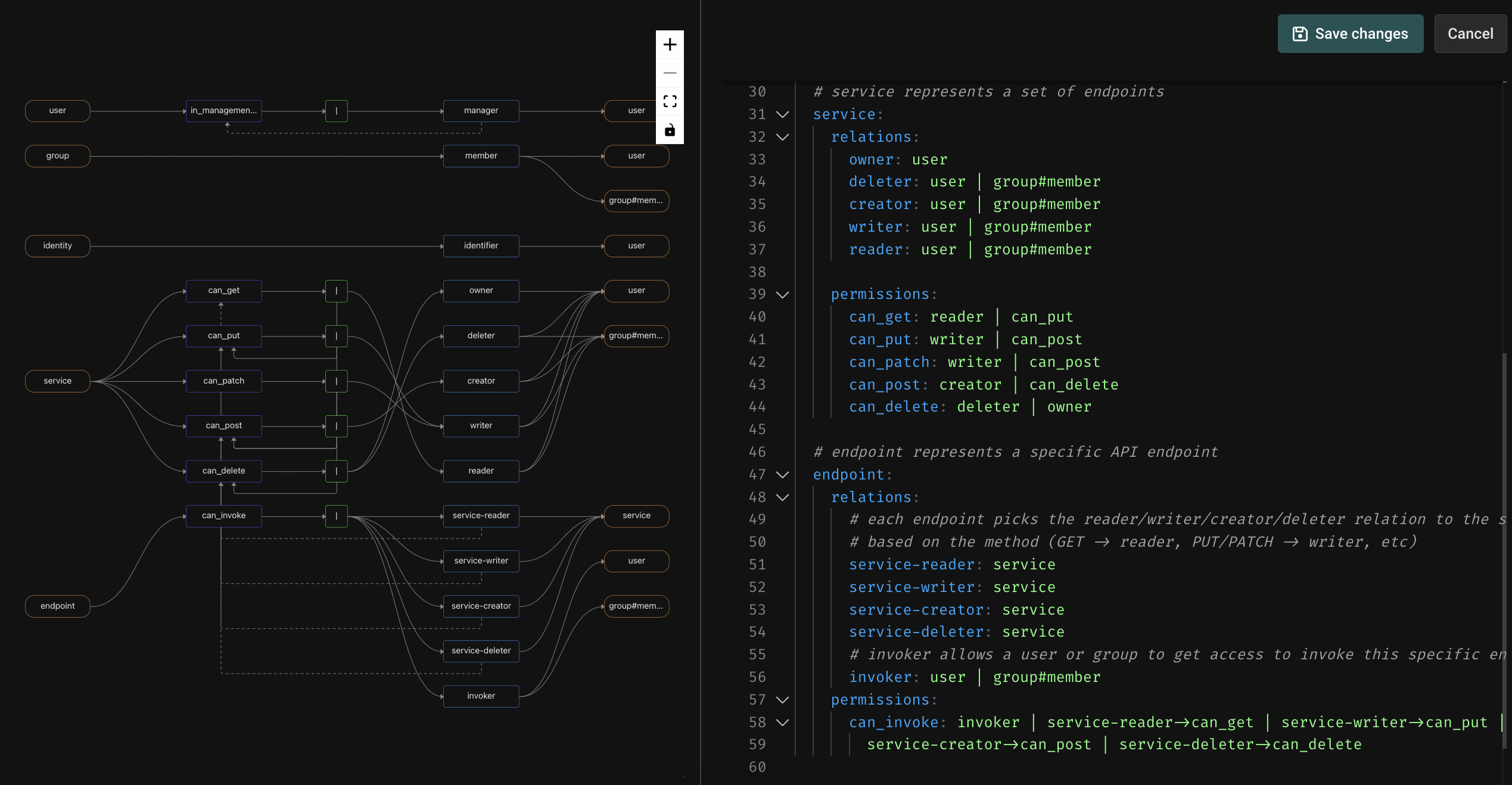
types:
# user represents a user that can be granted role(s)
user:
relations:
manager: user
permissions:
### display_name: user#in_management_chain ###
in_management_chain: manager | manager->in_management_chain
# group represents a collection of users and/or (nested) groups
group:
relations:
member: user | group#member
# identity represents a collection of identities for users
identity:
relations:
identifier: user
# service represents a set of endpoints
service:
relations:
owner: user
deleter: user | group#member
creator: user | group#member
writer: user | group#member
reader: user | group#member
permissions:
can_get: reader | can_put
can_put: writer | can_post
can_patch: writer | can_post
can_post: creator | can_delete
can_delete: deleter | owner
# endpoint represents a specific API endpoint
endpoint:
relations:
# each endpoint picks the reader/writer/creator/deleter relation to the service
# based on the method (GET -> reader, PUT/PATCH -> writer, etc)
service-reader: service
service-writer: service
service-creator: service
service-deleter: service
# invoker allows a user or group to get access to invoke this specific endpoint
invoker: user | group#member
permissions:
can_invoke: invoker | service-reader->can_get | service-writer->can_put |
service-creator->can_post | service-deleter->can_delete
Let’s start at the bottom. An endpoint has a can_invoke permission, which is directly assignable by creating an invoker relationship to a user or a group. This allows an API administrator to entitle a user or a group directly on a discrete endpoint.
The endpoint also has relations called service-reader, service-writer, service-creator, and service-deleter which ladder up to the enclosing service. The default transformation that occurs when importing an OpenAPI definition is to set the relationship of the endpoint based on its HTTP method - a GET creates the service-reader relation, a PUT or PATCH creates the service-writer relation, a POST uses the service-creator relation, and a DELETE uses the service-deleter relation. This allows the can_invoke permission to ALSO be assignable via relationships that a user or group has to the service. You can of course customize this default transform if you have different conventions or needs.
Now, let’s look at the service type. A service has discrete permissions called can_get, can_put, can_patch, can_post, and can_delete which are assignable through the reader, writer, creator, deleter, and owner relations on the service. These permissions are additive, in the sense that a deleter can invoke DELETE endpoints, and can also do anything that a creator can do. A creator can POST, and can also do anything that a writer can do... and so on.
To put it all together, users (or groups) can be entitled at the level of an entire service, at the level of a class of endpoints on a service (e.g. all GET endpoints), or at the level of a discrete endpoint. This provides a lot of flexibility in API entitlement, while keeping things simple and consistent.
Next, let’s look at the user, group, service, and endpoint instance data.
Authorization data
Click on the Objects tab, and within that the Service type. You should see the three services that were automatically added by the template.
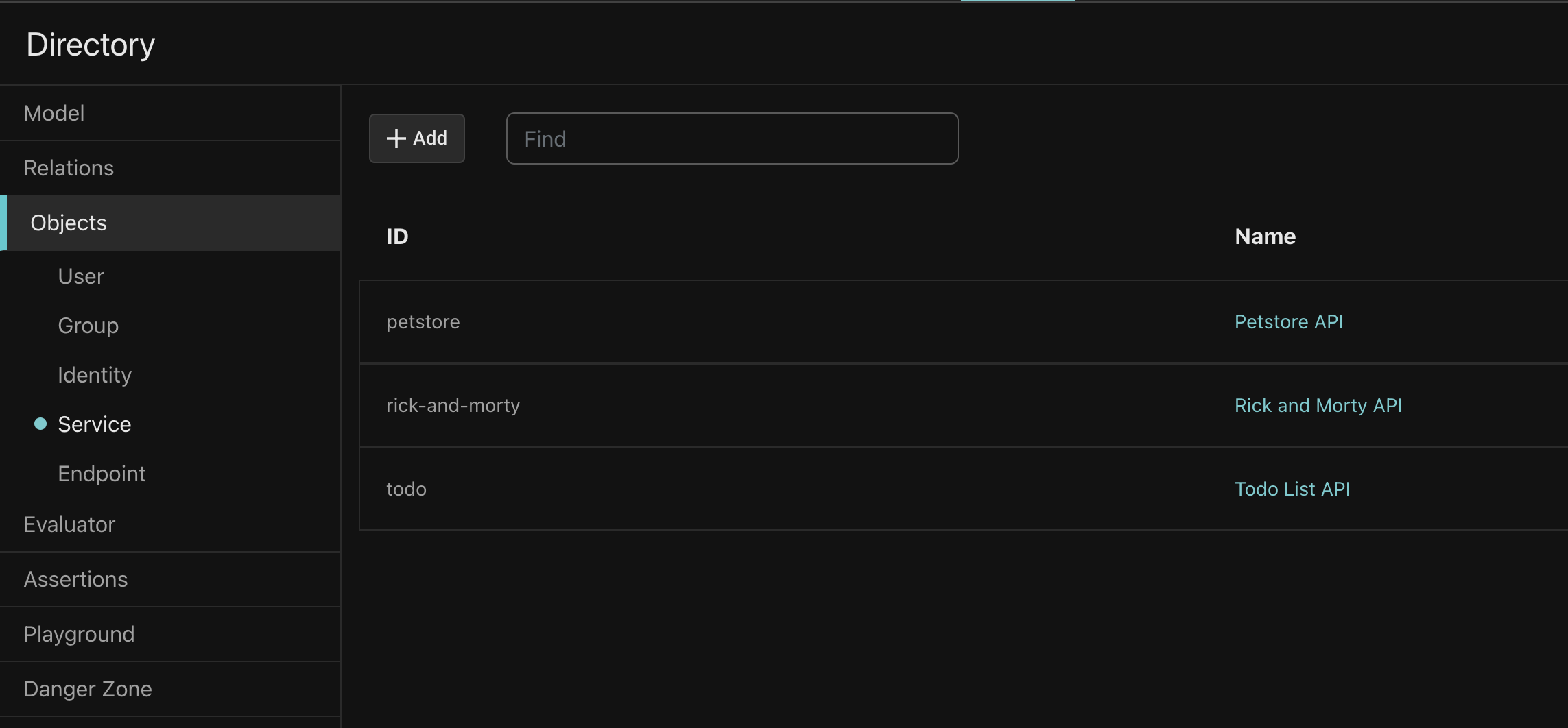
Let’s follow the trail of entitlements from users and groups to the services and endpoints. Click on the User type, which should show the five Citadel users - Beth, Jerry, Morty, Rick, and Summer.
Let’s click on Rick. As you can see, Rick is a member of the Global Deleters group.
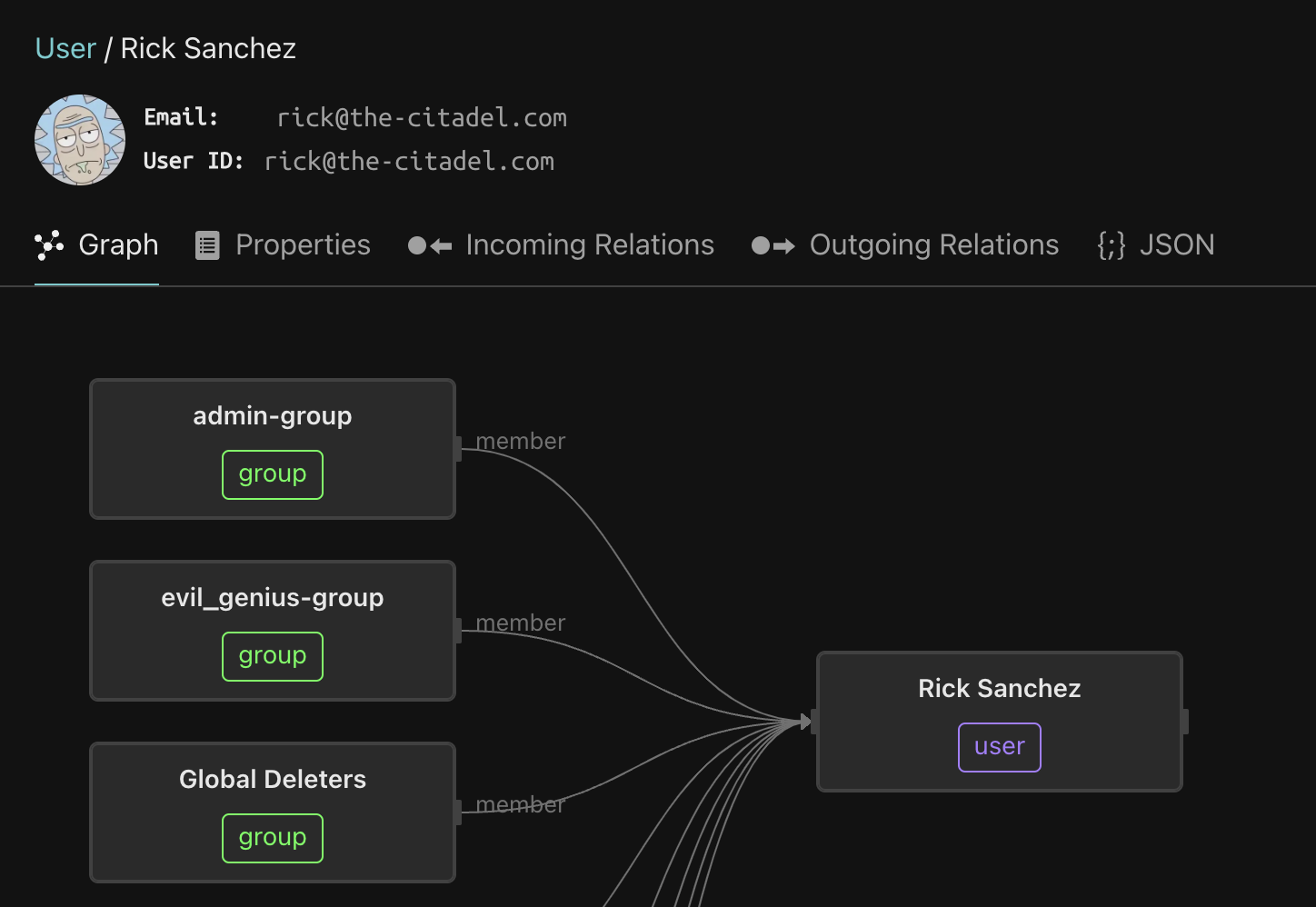
Next, click on the Global Deleters group.

This group aggregates the deleters group for each service. This pattern makes Rick a super-user - he can invoke any endpoint in the system, since the members of the Petstore API Deleters, Rick and Morty API Deleters, and Todo API Deleters groups can invoke any endpoint on the respective services, and being a member of the Global Deleters group means that Rick is transitively a member of these groups.
Next, let’s look at Morty - click the User type and then click Morty. Morty is a member of the Petstore API Creators group, which means he can invoke any Petstore endpoint that is not a DELETE. This demonstrates the pattern of how to entitle a user on a set of methods within a service.

Finally, let’s go back to the Service type and click the Todo List API. This shows the six endpoints that are part of this API.
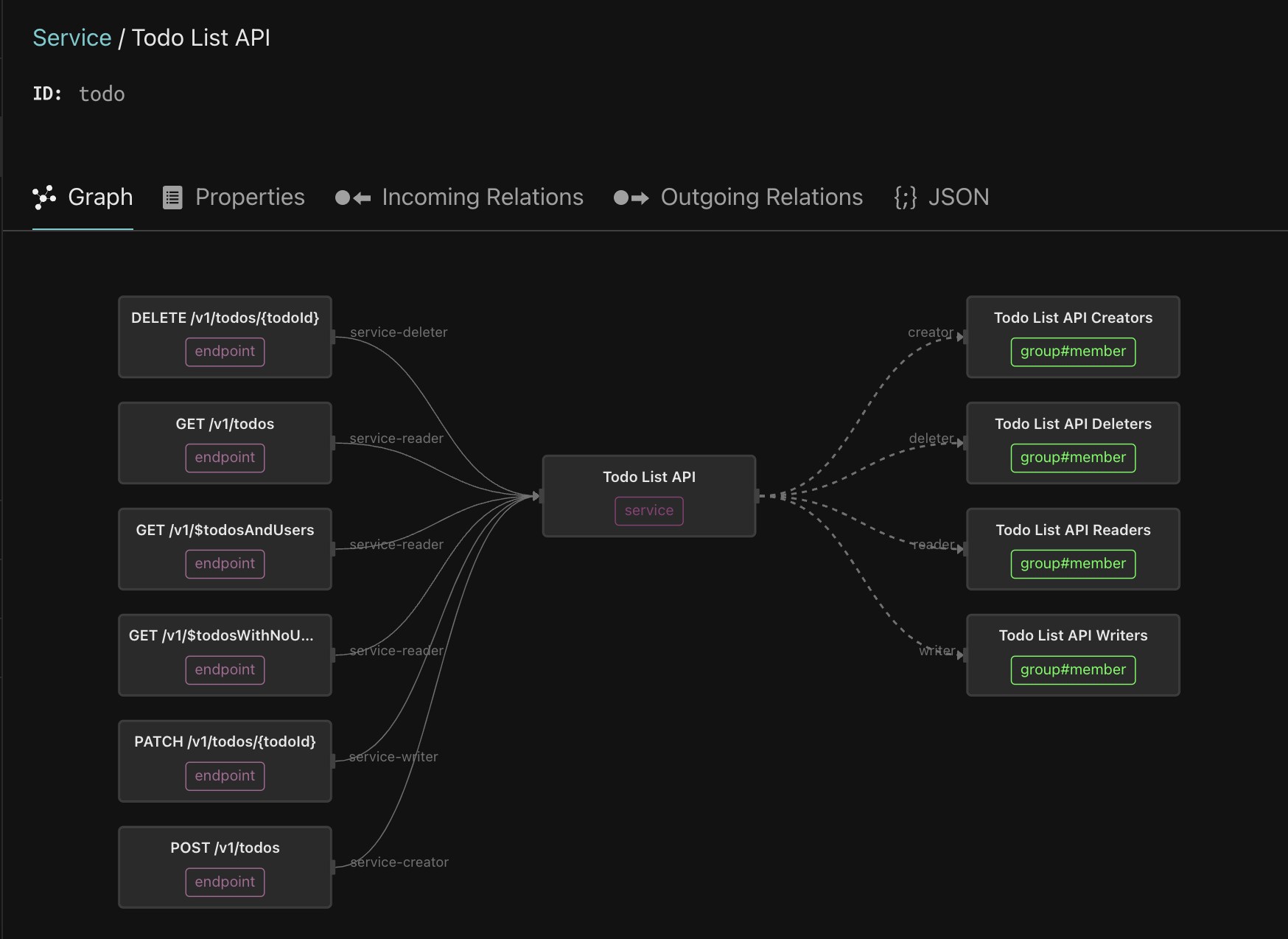
The group called Todo List API Readers is a reader of the service, meaning every member is entitled to invoke all the GET endpoints on this service. Click on the Todo List API Readers, and follow the trail of nested groups. As you can see, it includes the viewer-group, which comes from the Citadel IDP.
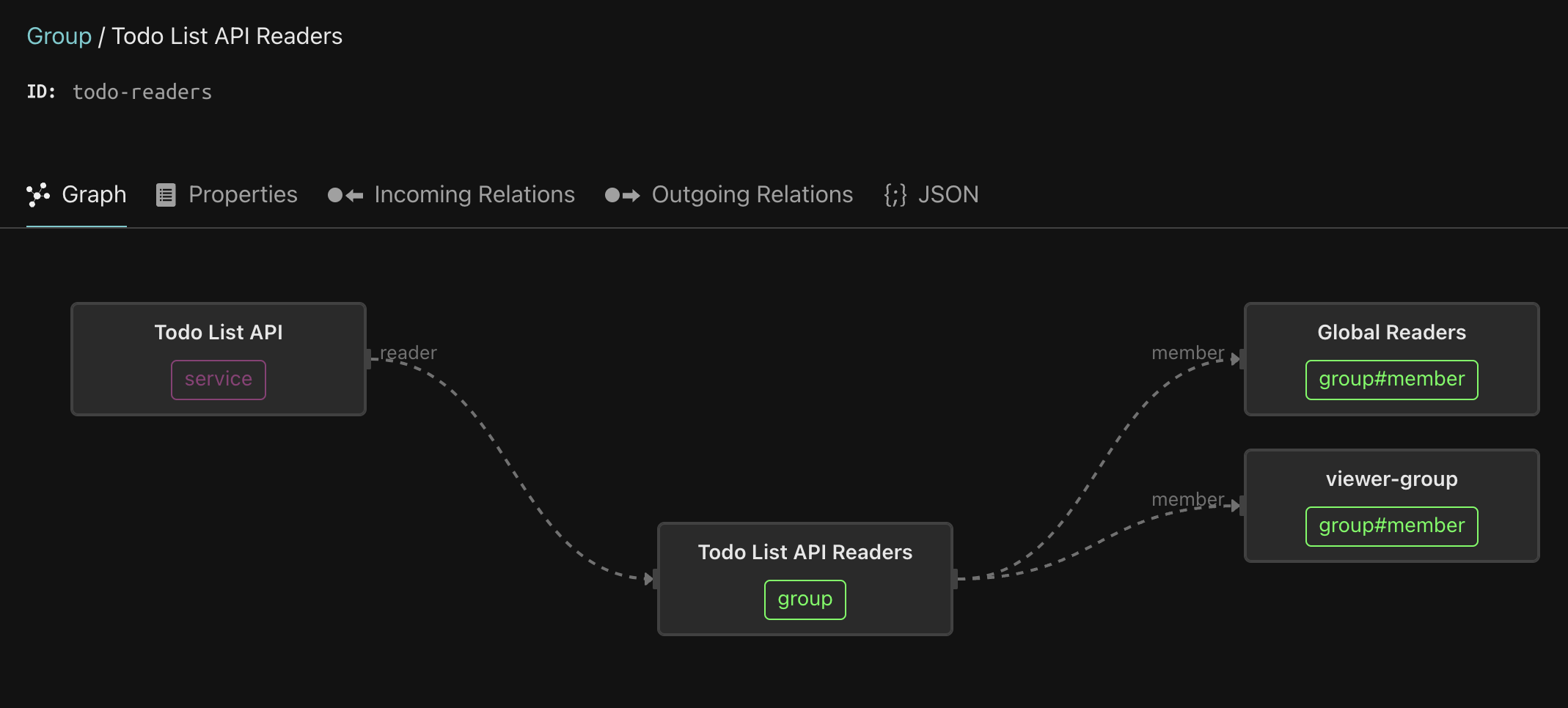
Clicking the viewer-group reveals its members - Beth and Jerry, as well as the members of the editor-group. Clicking the editor-group reveals its members - Morty and Summer, as well as members of the admin-group. And the admin-group includes Rick. So, transitively, every one of our protagonists are entitled to invoke any GET endpoint on the Todo API Service.
This pattern shows how to use nested groups in the IDP to control entitlements to classes of endpoints (in this case, the GET endpoints) in a service.
Next steps
Now that we understand the model and the instance data (services, endpoints, groups, entitlements), let's turn our attention to how to integrate the authorization model with an API gateway.